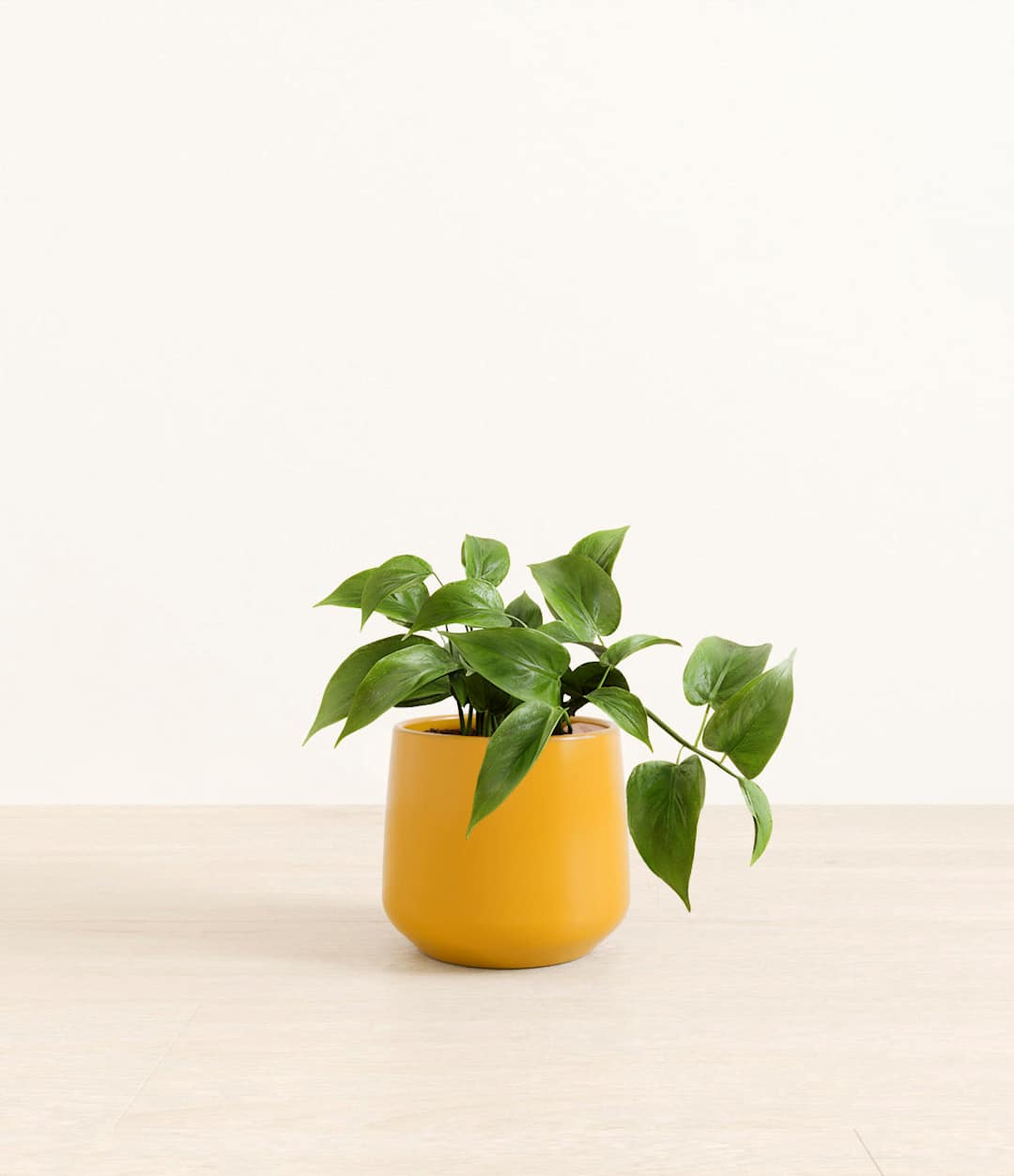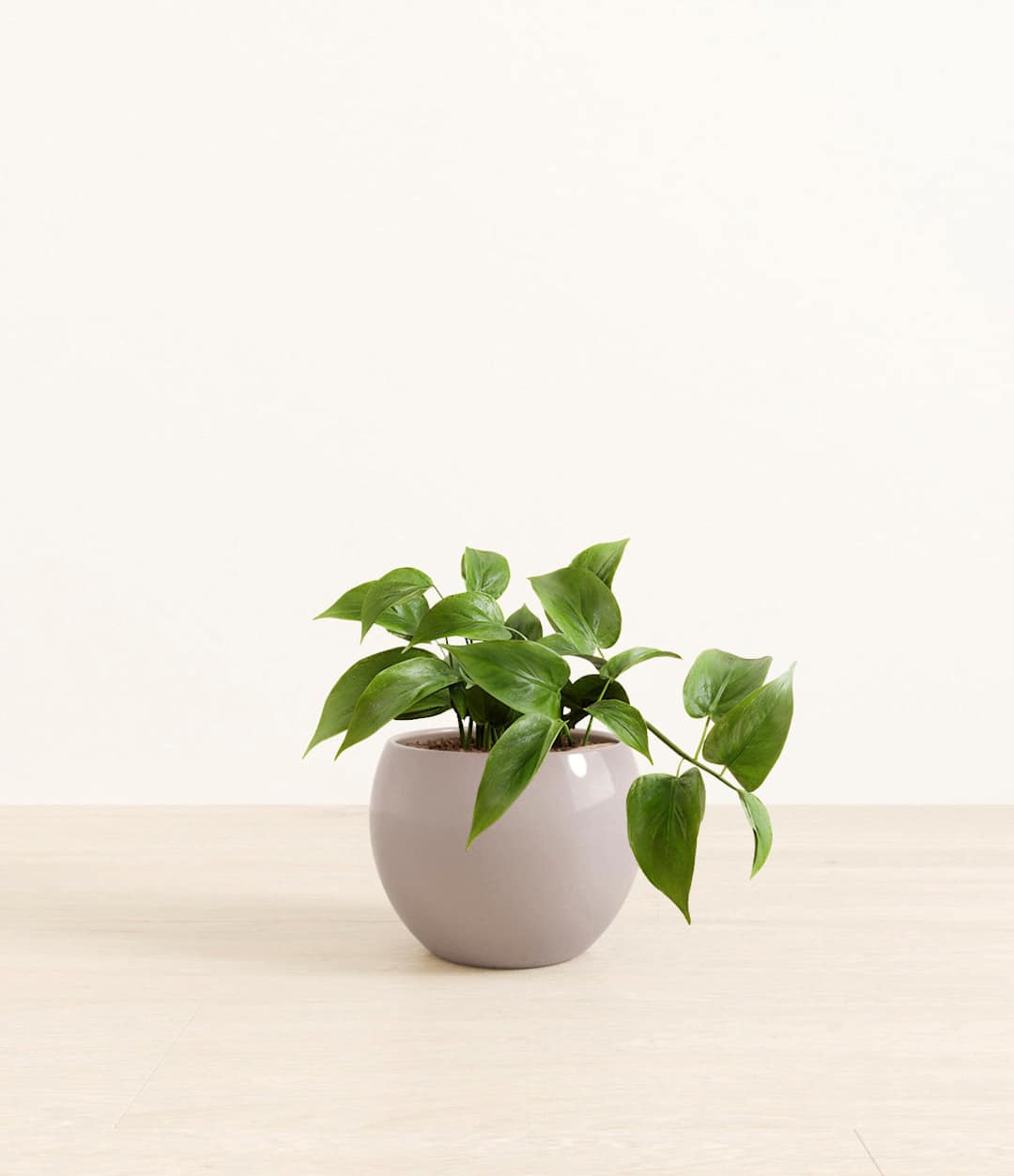How to Care for a Jade Pothos
Shop this plantAbout Jade Pothos
Our love for this natural trailer is as timeless as love itself, earning it the name Pothos, the god of love, named after the Greek word for 'yearning,' symbolising a vine that stretches as far and wide as the heart’s desire. Native to the Pacific Islands, Jade Pothos is admired for its resilience and graceful vines, adorned with a classic deep green foliage bringing about a perfect sense of calm.
Other common names
- Centipede Vine
- Hunter's Rove
- Epipremnum Aureum
- Golden Pothos
- Jade Pothos
How Often Should I Water My Devil's Ivy?
Jade Pothos is drought-tolerant and isn't high maintenance when it comes to watering frequency. The primary cause of the plant's decline is overwatering. Fortunately, with easyplant’s self-watering system, caring for your Jade Pothos is effortless. Simply check the easyplant reservoir once a month and top it up when it’s empty!
Jade Pothos Light Needs
Jade Pothos grows best in a well-lit space with medium to bright light, and can adapt to low light or spaces without natural light as well.
The best places to place your Jade Pothos are spaces where bright light streams in but isn't direct, like a bookshelf near a window. Since they're native to the forest floor, they are used to a certain degree of leaf coverage, which makes them susceptible to leaf scorch if left in harsh direct sunlight.
Jade Pothos Care
During the first few days at home, one or two leaves may turn yellow or fall off – this is normal and part of the plant’s adjustment period. Once settled, Jade Pothos is incredibly easy to care for. To encourage healthy growth, dust the leaves occasionally and rotate the pot by a quarter turn every month.
How Big Do Jade Pothos Plants Grow?
Jade Pothos is a natural trailing plant that can be trained to climb walls or cascade from shelves. Under ideal conditions, leaves can grow up to 20cm long. This fast-growing plant can reach up to 9 metres in length in the wild, but for indoor spaces, it looks best when kept between 1.8-3 metres. Jade Pothos typically grows around 45cm per month and reaches full maturity in under two years. Many factors contribute to the growth of this plant, including proper lighting, regular watering, adequate temperatures, and humidity levels. Repotting is recommended every 1-2 years.
Temperature & Humidity
Pothos is a tropical plant that thrives in warm climates. The ideal temperature for Devil's Ivy is between 18-29˚C. If temperatures in the space drop below 10˚C, it could begin to affect the health of your plant. These plants are sensitive to cold and should not be placed near drafts or fans. Even though Devil's Ivy is a tropical plant, it can acclimate to the typical humidity levels in homes. These plants still love high humidity, so you can always raise the humidity levels by placing the plant near a pebble tray with water, in a room with high humidity levels, or next to other plants.
Is Jade Pothos Toxic for Pets & Children?
Jade Pothos is moderately toxic if ingested, so keep it out of reach of pets and young children. All parts of the plant contain calcium oxalate crystals, which can cause irritation and swelling of the mouth, tongue, and throat if eaten. The sap may also cause skin irritation. If ingested, seek medical or veterinary advice.
Troubleshooting Common Problems with Jade Pothos
Yellowing leaves may be caused by excessive light or overwatering, so try moving the plant to a shadier spot and reducing watering frequency. Browning leaf tips often indicate under-watering or low humidity, ensure the soil doesn’t dry out completely and consider increasing humidity levels. If you notice pests such as spider mites, mealybugs, or aphids, look for small brown, yellow, or black spots, leaf deformities, or webbing under the leaves. Wipe pests away with a damp cloth and treat the plant with neem oil or insecticidal soap.
Frequently Asked Questions about Jade Pothos Plant
- Is Devil's Ivy an Indoor Plant?
Devil's Ivy is both an indoor and outdoor plant. In its native environment, it grows in the understory forest in the Solomon Islands. However, it is highly adaptable to various growing conditions and can thrive indoors.
- Where Do You Put Devil's Ivy?
Since Devil's Ivy is so adaptable to different environments, you can place the plant almost anywhere. Since it is a vining plant, consider placing it high to allow the vines to hang down or accommodate the vines spreading across walls. The more indirect light the plant has, the happier it will be and the faster it will grow.
- Are Devil's Ivy Plants Easy to Care For?
Devil's Ivy is extremely easy to care for and is great for beginners. They can adapt to various light exposures, humidity levels, and watering schedules. If you want your plant to thrive, it’s important to learn proper care and monitor it for common issues.



